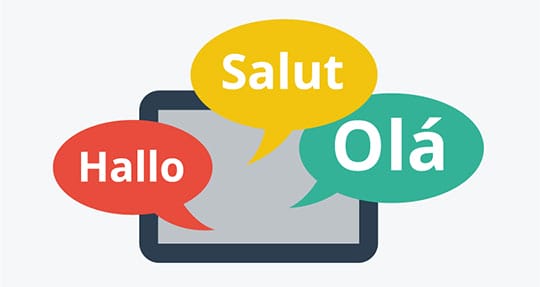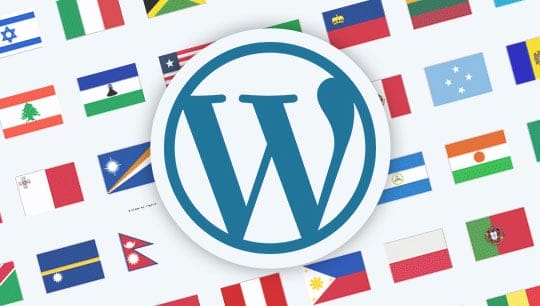If you’re reading this, it is most likely that you want to know how to create a multilingual website and most importantly know just how important it is. For those who do not know, I’ll run you down on the reasons a multilingual site is really important and how to create it but wait, what is a multilingual site?
What is a multilingual website?

A multilingual site has contents in more than one or two languages. Though the English language is really common, one that dominates the internet, it’s important to know that there are other languages and non-native English speakers.
Recommended for you: Make your Website Multiligual using Multilingualizer.
Reasons you need to create a multilingual website

1. The internet is made up of more than English speakers

Most people are English speakers but they aren’t the only ones using the internet. There are other popular languages spoken by a large proportion of internet users; incorporating these languages into your website would help you reach a lot of people. Expanding your reach to more people means more potential customers, which is good for business and marketing.
2. It shows your non-English speaking customers that you care about them too

Do you know how pleased I get when I see a site that can be translated to my native language? It shows that the owner of the site cares about people like me who may not be English speakers or just prefer our first language.
People would appreciate your site more if you had the option of switching to their language even if they are fluent English speakers. It makes your visitors feel welcomed and turns them into subscribers and potential customers.
3. It helps with traffic and sales increase

As earlier stated, having a multilingual site will help you gain customers and also subscribers which equals more sales! Most people prefer to buy something in their native language so the more languages you add, the higher the chance of having more sales and visibility.
For example, if I wanted to buy a product and it was on a website I couldn’t understand and cannot translate to my language, I would be disappointed and won’t purchase. You’d agree with me that you’ll find a site that has your language and can translate to it if it doesn’t.
4. It gives you an edge over others

Once I leave that site from my previous example, that is where your site would come into play. A multilingual site and soon all my family and friends will become your customers and they too will introduce more.
There’s competition everywhere, no matter what you do in life. Creating a multilingual site would help you stand out, be different from your competitors. I would always love a website that has my first language as an option and so will you.
5. It will be easier to find you via search engines

It is a known fact that Google doesn’t provide results in just English, because you can select different languages and Google will show you results in these languages.
Having a multilingual site helps you appear in search engines of the languages you feature on your website which brings you traffic, customers, subscribers. Also, there are quite a lot of other search engines and in other languages so if your website features these languages, you could appear on them too. Pretty good stuff if you ask me
Now you know how important a multilingual website is, I’m sure you must now be excited about how to create one and I’ll guide you through it.
How to create a multilingual website?

You may like: Are You Building a Shopify Health & Fitness eCommerce Store? Try These Themes First!
1. Translating the contents of your website

The most important step to creating a multilingual site is translation. If you cannot speak the languages you plan to add to your site, there are a lot of options available to help you translate the content on your site.
You can get a professional translator or you can use some translation companies to help your website. Although, there are a lot of good translation tools online that you could use to get your website running e.g., Google Translate, Future Trans, DuoLingo, etc.
Make sure to translate every part of your site, and not overlooking any part, not even the tiny details you think do not matter. While translating, you may discover that not everything can be translated from a language to another, so make sure to pay close attention while translating. Make it more unique by adding some keywords particular to a featured language or country. It shows some thoughtfulness and draws in more views.
2. Translate the visual content of your site

Translating the text of your website isn’t the only translation you have to do. The above also applies to the images of your site. Localize every visual content to match with the regional language of the text displayed for example if your language is translated to English, the Statue of Liberty image would be really beautiful and build a better connection with your English-speaking visitors and for your French visitors, the Eiffel Tower would be great and so on. Select images that match each featured language of the texts on your website.
3. Alter your SEO for all the featured languages on your site

Once you have done the first two processes, it is time to ensure your work can be found all over the Internet and that includes optimizing each of the new pages for the search engine.
Conduct keyword research in your new featured languages, update your SEO settings accordingly. This is so that visitors/customers searching the Internet for something like yours in their native language will be able to find you.
4. Inform your visitors of the changes to your site

Now that your website is set, you need to inform your visitors of these changes and that they can access your site. You could build a language menu; customizing it to your taste.
The process of creating a multilingual site feels pretty scary at first but it gets easier once you have created your professional website, firstly in your primary language whatever it is. While you can use any website builder, I’d personally recommended using WordPress to create your multilingual site.
How to create a multilingual website with WordPress?

There are a lot of WordPress plugins you can use to create a multilingual site but below are three:
Each of these plugins has features that can help you to develop a multilingual website as they can allow:
- Allow you to translate posts, pages, products, and other post types.
- Makes it easier to translate categories, tags, plugins, themes, etc.
- They give you access to set up SEO-friendly URLs.
You may also like: WordPress Translation Plugins – Make your Site Multilingual.
Using WPML to translate your sites

WPML is a WordPress plugin that allows you to install the components you need. You will require the multilingual CMS version of the plugin. Install the WPML core plugin at the beginning. Then install WPML Translation Management and WPML string translation. Also, your themes and plugins determine if you will need to install different WPML components.
Step 1

There is no hard way here; just install the core plugin and register it. Then head to the WordPress admin then to your plugins and to Add New and then to commercials where you will see the entire list of WPML components and you can then pick the one your site requires.
Step 2

Secondly, you need to add languages to WordPress. Without a multilingual plugin, WordPress only gives you access to one language of your choosing. WPML lets you add as many languages as you need to the same site. After installing WPML, go to the WPML and then to the “languages” menu.
You have to first pick your website’s current language then WPML will let you choose the other languages that you want. WPML adds language information to the URLs of your site and this allows all translations to appear in unique URLs.
Step 3

Thirdly, you need to add language switchers. This allows visitors to choose the language they prefer to see your content in. WPML lets you do this and can fit into any design of your WordPress site. You can add your language switchers as widgets or to your menus.
Step 4

Next, you have to translate the content of your site. Now that you have your website in various languages and even a language switcher, the real work begins now. WPML makes translating easier but you can also translate it yourself. WPML recommends that you use their WPML Advanced Translation Editor if you choose to edit your translation yourself.
Other Steps

There are a lot of other steps and if you’d like to explore more on how to use WPML effectively to create your multilingual site then check this guide out or are you interested in knowing how to use the others? Then maybe you should give this WordPress guide a look.





